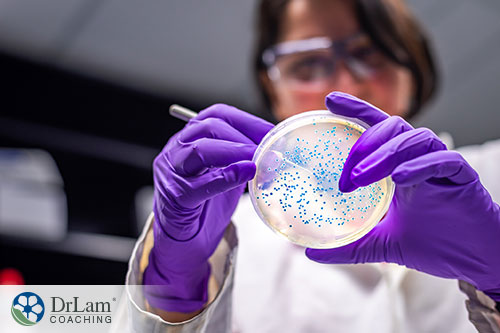 Lyme disease may be one of the least known persistent conditions because of its difficulty to assess and to remediate. So, that makes alternative Lyme treatment more important than ever. Especially if you have adrenal fatigue.
Lyme disease may be one of the least known persistent conditions because of its difficulty to assess and to remediate. So, that makes alternative Lyme treatment more important than ever. Especially if you have adrenal fatigue.
Also called Lyme Borreliosis, Lyme disease is caused by an infection brought on by one of about 50 types of bacteria. Of these, Borrelia burgdorferi most often causes Lyme disease.
These pathogens are spirochetes, that is, their shape is like that of a corkscrew. This corkscrew shape allows them to drill deep into your body’s cells where typical antibiotics don’t reach. At times, they can penetrate the cell wall and live inside cells. This gives them protection behind the cell walls of your healthy cells. Because of this, Borrelia bacteria survive most antibiotics and even harsh internal environments.
Once inside your body, these pathogens and the co-infectious agents that often come with them cause serious problems. Over the long term, they lead you to be defenseless due to these problems.
Lyme disease occurs almost everywhere, in every country except Antarctica. It is second only to malaria in prevalence in rural areas. Because of this high prevalence and the bacteria’s resistance to antibiotics, alternative Lyme treatment should be considered.
When you’re thinking about alternative Lyme treatment, conventional remediation for the condition, or a combination of the two, keep in mind that assessment is difficult. Part of the reason for this comes from a lack of reliable or accurate lab tests.
Lyme disease often goes without detection because the sensitivity of blood serum tests is so low. Thus, this 50% accuracy in the current lab tests contributes to the condition not being detected.
Because standard tests measure antibodies, Lyme disease escapes detection in its early stages. By the time your body produces enough antibodies for these current tests to measure (usually 4-6 weeks), the bacteria already will have reproduced to large quantities.
 Almost all conventionally trained medical professionals tend to rely on lab tests to tell them what goes on in your body. This mindset works against any effort to bring in alternative Lyme treatment or assessment options.
Almost all conventionally trained medical professionals tend to rely on lab tests to tell them what goes on in your body. This mindset works against any effort to bring in alternative Lyme treatment or assessment options.
An overdependence on lab test results hinders the accurate assessment of Lyme disease. Any lab test gives you only a picture of what goes on in your body at the present time.
On the other hand, a large number of factors affect the assessment and remediation of Lyme disease, including alternative Lyme treatment options.
These factors include your environment at home and work, any travel in which you engage, your clinical picture, the symptoms you present, what treatments you have tried and the length of time you’ve had these symptoms. And current lab testing does not consider these factors. And, unfortunately, many conventionally trained medical professionals do not consider them either.
Another limitation of current lab tests is that they fail to measure all of the biochemical processes that occur in your body at the same time. They cannot do so. They can only measure certain key functions of your body. Therefore, a medical professional that considers the whole picture, including alternative assessment options and alternative Lyme treatments, will obtain better results in the long run.
Also, most common lab tests yield normal or borderline-normal results when assessing chronic conditions like Lyme disease. Their value in these conditions lies in ruling out more serious conditions. Most borderline results return to normal as the condition improves.
However, while lab tests alone are limited, some basic lab tests can yield useful results in assessing Lyme disease. They give your medical professional valuable information in addition to a thorough history. They provide value even when you are planning to use alternative Lyme treatment options. Some of these tests are:
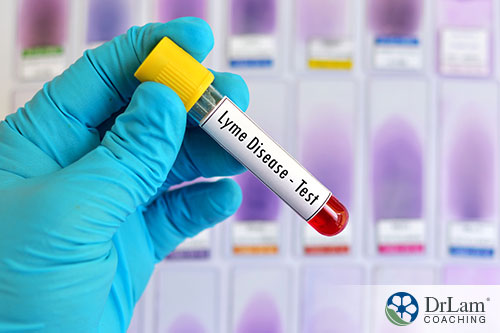 This test measures several cellular aspects of your blood. The CBC measures white blood cell count (WBC). A low WBC suggests chronic infection and can point out the presence of Lyme bacteria. Low WBC also occurs in healthy people. But a high WBC indicates an active infection.The differential assesses types and ratios of white blood cells in your body. It assists in identifying the kind of pathogen in your body.
This test measures several cellular aspects of your blood. The CBC measures white blood cell count (WBC). A low WBC suggests chronic infection and can point out the presence of Lyme bacteria. Low WBC also occurs in healthy people. But a high WBC indicates an active infection.The differential assesses types and ratios of white blood cells in your body. It assists in identifying the kind of pathogen in your body.
Hemoglobin levels give your medical professional information regarding red blood cells. A low hemoglobin level suggests anemia that may be due to the destruction of red blood cells by infections.
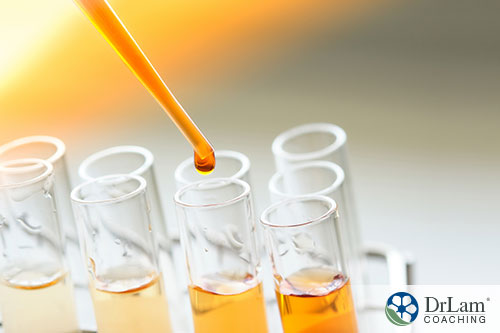 Two lab tests designed specifically to detect Lyme disease follow below. One thing to keep in mind: Even with these tests, Lyme disease is very difficult to assess. Most of the time, your physician administers tests in addition to a thorough clinical workup. Due to any of several reasons, these tests may not detect chronic Lyme.
Two lab tests designed specifically to detect Lyme disease follow below. One thing to keep in mind: Even with these tests, Lyme disease is very difficult to assess. Most of the time, your physician administers tests in addition to a thorough clinical workup. Due to any of several reasons, these tests may not detect chronic Lyme.
One of the tests specifically used for Lyme, it cannot detect the bacteria in your body. Instead, it tests for the presence of antibodies developed by your body when the bacteria are present. Because of this, if this test is administered too early, your body may not have developed enough antibodies for them to be detected. Thus, a false negative reading results. On the other hand, this test also may return false-positive results.
Regardless of which results come from the ELISA test, your physician will use this test. It uses an electrical current to separate specific proteins in your blood into patterns. These patterns are then compared to those seen with Lyme disease infection. If your results come back with at least five matches in the bands produced, the results show you have Lyme disease. Unfortunately, different labs may have different standards. This leads to the possibility of getting a positive result from one lab and a negative result from another lab.
This most recent two-tier testing for Lyme disease takes the place of the ELISA-Western Blot testing. It utilizes a sensitive enzyme immunoassay (EIA) which its developers say produces results as good as the previous two-tier tests. Although approved by the Food and Drug Administration, it carries an accuracy of about 50%, the same accuracy percentage as the previous two-tier testing process.
The conventional approach to remediation of Lyme disease consists of a course of antibiotics over a 2-4 week period. While this will rid your body of the bacteria that causes Lyme disease, the nature of the bacteria interferes with the effectiveness of this process. As a spirochete, the bacteria can burrow down into deeper recesses of your body and thus be untouched by antibiotics. Later, as a stealth infection, the bacteria causes low levels of toxins to be released, leading to continual physical stress on your body.
In addition, antibiotics kill all bacteria, including the good bacteria in your microbiome. Killing off these good bacteria leads to dysbiosis of your gut and an increased risk of overactive immune responses and chronic inflammation.
However, there are potentially good options for alternative Lyme treatments in several forms.
This alternative Lyme treatment consists of administering very diluted doses of the Lyme bacteria along with beta-glucuronidase, an enzyme that increases T Regulator cells to reduce inflammation. Injection of the combination takes place on a seven-week cycle. Most of the time, your medical professional will start initial doses fairly low and titrate upward until an effective dosage becomes evident.
This is a slow process on purpose and works to 'train' your immune system to recognize the Lyme bacteria and not become hyperactive in dealing with it. Theoretically, your chronic Lyme disease becomes an autoimmune condition in which your immune system attacks your body, thus the need to retrain your immune response. This theory makes up the basis for this type of immunotherapy.
A word of caution: At times, the dosage given in Low-Dose Immunotherapy can cause flare-ups of your symptoms. If this happens, you know the dosage is too strong and needs to be weaker. Following the first dose of the most effective dosage, the relief typically lasts only a short time. But with each succeeding dose, relief continues longer and longer.
Another alternative Lyme treatment that continues in a modified experimental form consists of using the antimicrobial enzyme disulfiram. This enzyme increases the production of acetaldehyde when you drink alcohol, thus producing the hangover headache you may experience.
Although its effectiveness as a treatment for Lyme disease does not have the research backing of some other options, anecdotal and clinical results appear promising. Considerable clinical evidence of Herxheimer reactions exists that you must consider. Potential side effects include drowsiness, headache, skin rash, and decreased sexual ability in males. Eye pain, mood changes, and numbness are less common side effects.
While ozone can be dangerous if not used in a medically supervised way, it is widely used and safe for specific applications. Ozone therapy has been used safely for medical treatment for over 150 years. When used as an alternative Lyme treatment, ozone therapy targets specific pathogens as well as stimulates your immune system overall.
The mechanism whereby ozone therapy works includes inactivating pathogens (bacteria, viruses, protozoa, yeast, and fungi), increasing the metabolism of oxygen and stimulating the immune system. With bacteria, ozone therapy works to oxidize phospholipids and lipoproteins in the bacteria’s cell envelope. Ozone interrupts the reproductive cycle of viruses by interfering in the virus-to-cell contact. This therapy also inhibits cell growth of fungi.
Ozone therapy can be performed in different ways in order to manage Lyme alternatively.
A safe and well-tolerated method of utilizing ozone, this method uses a saline solution saturated with ozone with very few side effects. Clinical studies show intravenous ozone therapy helps restore the ability of the blood to transport nutrients and other biochemicals. It also appears to help restore homeostasis in the body and increase antioxidant properties. Other benefits include stimulation of your immune system.
This method of ozone therapy yields a detoxifying effect, restores colon function, and boosts the immune system. It specifically targets liver and gut issues. For people with AFS and liver congestion, it may be additionally beneficial.
This use of ozone therapy as an alternative Lyme treatment uses hot steam to open the pores of your skin, allowing ozone to enter your body more effectively. This approach oxidizes toxins for easier elimination from your body. It effectively de-activates bacteria and other pathogens in your body. Speeding up the metabolic process supports losing weight also. And it helps eliminate free radicals and waste products from your body. This approach also supports the balancing of hormones and enzymes.
Essential oils have been used for centuries for multiple purposes. They come from all-natural sources such as spices and various plants. As an alternative Lyme treatment, not much research evidence exists regarding effectiveness.
One study evaluated 34 essential oils and their effectiveness against the bacteria that cause Lyme disease. The researchers introduced the oils into lab samples of the bacteria.
This research came about as an investigation into methods of dealing with persistent bacteria such as those that cause Lyme disease. Persistent bacteria remain after conventional treatment with antibiotics because they form a biofilm that protects them from the medications.
Results of this research showed five essential oils - oregano, cinnamon bark, clove bud, citronella, and wintergreen - dissolved the biofilm around the persister bacteria. However, this research involved lab conditions and not human subjects. More research is needed to determine if this alternative Lyme treatment would be safe for humans.
This approach stimulates your immune system, which possibly aids in dealing with Lyme disease. Also, it helps improve sleep, decrease pain, and decrease anxiety, all of which affect those with Lyme disease.
The inflammation associated with Lyme disease is worsened by certain kinds of foods. Therefore, eliminating or decreasing those foods makes up another alternative Lyme treatment. Avoiding dairy, sugar, alcohol, gluten, and caffeine helps you handle inflammation better. Staying away from these foods strengthens your immune system, decreases mucus where bacteria can hide, and helps repair the lining of your gut.
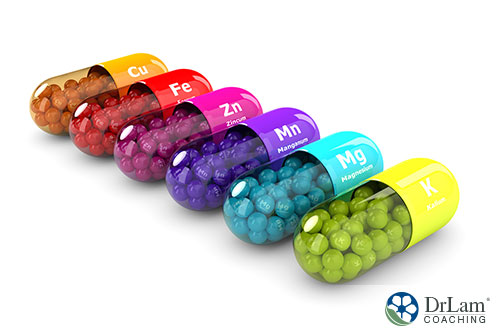 Supplements aid you in assuring you get all the nutrients needed for a healthy body. Trace minerals, probiotics, vitamin D, and omega-3 help those suffering from Lyme disease. However, it's a good idea to take as few supplements as possible and try to get nutrients through food. An overabundance leads to gut issues, especially if your gut is already weakened by conditions such as AFS. Instead, eat a lot of leafy greens or brightly-colored vegetables daily.
Supplements aid you in assuring you get all the nutrients needed for a healthy body. Trace minerals, probiotics, vitamin D, and omega-3 help those suffering from Lyme disease. However, it's a good idea to take as few supplements as possible and try to get nutrients through food. An overabundance leads to gut issues, especially if your gut is already weakened by conditions such as AFS. Instead, eat a lot of leafy greens or brightly-colored vegetables daily.
This alternative Lyme treatment involves eating this superfood for its antioxidant and detoxifying effects. It binds to the toxins in your body and aids in their elimination. It also helps you avoid a Herxheimer reaction in which the killed Lyme bacteria cause inflammation as they are expelled from the body.
Exercise benefits everyone. As an alternative Lyme treatment, it generates heat and oxygen, both of which the Lyme bacteria cannot stand. Consult with your healthcare provider to determine how much exercise benefits you, especially if you have AFS.
Because the bacteria that cause Lyme disease form a protective biofilm, natural substances that disrupt this biofilm bring relief from Lyme disease. Some research shows stevia, a natural sweetener, contains some biofilm disruptor qualities. Also, several herbs contain these properties. Consult with your healthcare professional concerning potential side effects.
This is the process of removing heavy metals from the body. Based on the assumption that heavy metals contribute to Lyme disease symptoms or make it worse, removing them from the body should help the body feel less congested or inflamed.
This alternative Lyme treatment requires the use of a chelating agent to bind to the heavy metals in your bloodstream. It then combines them together for processing by your kidneys and excretion in your urine.
One study researching possible alternative Lyme treatment options found 30 of these options marketed for people suffering from Lyme disease. Further research in the medical literature found little or no support for the effectiveness of these approaches.
However, it is important to keep in mind that research is expensive and is usually funded by pharmaceutical companies that make money by producing drugs. There is no money to be made in supplements or exercise. This is why very little research takes place regarding those modalities.
The best course is to consult with your healthcare professional before attempting any of the alternative Lyme treatment options. Remember, natural remediation efforts can be just as toxic or dangerous as some conventional efforts. Also, keep in mind that most of these natural approaches increase in helpfulness when combined with conventional approaches to Lyme disease.
During remediation efforts focused on ridding your body of Lyme bacteria, the need for liver support increases. Your liver helps rid your body of toxins, pathogens, and metabolic by-products. When Lyme invades your body, the burden on your liver increases.
Typically with Lyme disease, especially when it becomes chronic, the amount of endotoxins in your body increases due to the number of co-occurring infections with Lyme. Thus, the increased burden on your liver. Then, as your body eliminates the Lyme bacteria, still more burden finds its way to your liver as it works to eliminate the destroyed bacteria.
Glutathione works to build up your liver function during this time. Milk thistle and turmeric are good herbs to take to support your liver. Other supplements to add to your diet at this time include vitamins C, E, and B; Dandelion root; Burpleurum; chlorella; Schisandra; and phosphatidylcholine.
The importance of adrenal support before, during, and after Lyme disease treatment can not be overstated. Adrenal support before this treatment builds up your immune functioning. If you suffer from a condition that decreases adrenal functioning, such as Adrenal Fatigue Syndrome (AFS), your immune function already suffers as well. Building it up prior to treatment for Lyme disease helps you fight the effects of the disease.
During treatment, adrenal support remains important. The treatment approaches may become an additional stressor if your adrenals are not working well.
After treatment, adrenal support to strengthen functioning helps your body deal with any Herxheimer effect that may occur.
 Whenever stress from any source hits your body an automatic response occurs that leads to your adrenal glands producing and releasing higher amounts of cortisol to fight the effects of the stress. If the stress resolves, your adrenals return to normal. However, in today’s culture, stress often becomes chronic and severe.
Whenever stress from any source hits your body an automatic response occurs that leads to your adrenal glands producing and releasing higher amounts of cortisol to fight the effects of the stress. If the stress resolves, your adrenals return to normal. However, in today’s culture, stress often becomes chronic and severe.
One result is an overload on your adrenals. With increased stress comes an increased demand for cortisol. At some point, your adrenals become fatigued and unable to release enough cortisol to meet the demand. This is the beginning of adrenal fatigue.
Another automatic mechanism in your body that helps you deal with stress is the NeuroEndoMetabolic (NEM) Stress Response. Six interrelated circuits, comprised of three overlapping organs or systems each, normally work in balance to keep your body functioning optimally.
Chronic stress affects these circuits and pushes them into a state of imbalance. When this occurs, symptoms result. Because of the interrelated nature of these circuits, what affects one affects others as well. Due to the stress effects of Lyme disease, the inflammation circuit is the one most affected by these bacteria.
The inflammation circuit holds the immune system, the microbiome, and the gut. When you are under stress, these body systems work to keep up with their normal duties as well as fight the stress you experience.
Inflammation coming as a result of your immune system reaction has a very important role. It helps your body repair damage caused by bacteria or other pathogens and helps get rid of whatever causes you harm. The swelling, heat, pain, and redness that you feel with inflammation are side effects of this process.
As soon as your immune system starts defending your body from the effects of pathogens such as the bacteria that cause Lyme disease, inflammation begins. Blood capillaries dilate in the region where infection starts and the walls of these capillaries become porous. This allows white blood cells to pass through and reach where damage exists.
The increased blood flow to that part of your body produces heat. Increased fluid in the area of the infection brings on swelling and pain. The activity of the molecular mediators as they fight the inflammation also triggers pain.
While this process occurs normally and works to keep your body functioning optimally, problems arise when the inflammation goes unchecked. If this natural inflammatory response is not controlled, inflammation becomes chronic. This often happens with continuing stress from any source.
Constant stress results in your immune system working overtime, resulting in chronic inflammation. The resulting state of imbalance serves to increase the likelihood of contracting infections and diseases from various sources. It also leads to premature aging.
One source of this kind of constant stress comes from the presence of stealth infections that are hidden from detection. The Lyme disease bacteria cause one such stealth infection. This kind of infection produces low-grade, continuous inflammation due to its toxins.
Living and working in an environment where bacteria, fungi, viruses, and protozoa impact you continually makes stealth infections more likely. Many of these pathogens, such as the bacteria that cause Lyme disease, stay in your body for long periods of time.
The bacteria that cause Lyme disease are spirochetes, able to literally burrow deep within your body and stay active for a long time. In that time, they continually produce toxins that release into your body in small amounts. These tiny amounts prevent conventional lab tests from discovering them, but continually stress your body.
If your immune system weakens for any reason, with AFS for example, these dormant bacteria can activate and cause more problems. Stealth infections caused by these bacteria lead to your immune system becoming hyperactive. When this occurs, the risk of an autoimmune condition increases dramatically.
In fact, many of the stealth infections that occur present with symptoms suggestive of an autoimmune disorder. Swelling, fatigue, food sensitivities, and joint pain are some of the symptoms that come with these types of infections.
 When this circuit becomes dysfunctional due to continual stress, a number of problems arise. Considering the stress that comes from stealthy Lyme bacteria, possibly added to continuing stress from other sources, the following sequence of events may occur.
When this circuit becomes dysfunctional due to continual stress, a number of problems arise. Considering the stress that comes from stealthy Lyme bacteria, possibly added to continuing stress from other sources, the following sequence of events may occur.
Conventional medical remediation efforts involve prescribing antibiotics to kill the Lyme bacteria. Over a course of 2-4 weeks, these medications kill some of the Lyme bacteria along with a lot of the good bacteria that inhabit your microbiome and gut.
Killing the good bacteria causes dysbiosis in your microbiome and gut. This opens the way for negative changes to occur including difficulty digesting food and absorbing nutrients. And if your gut and microbiome already suffer from the effects of another chronic condition, the antibiotics aggravate them.
Should the antibiotics not prove effective in the first dosage, conventional medical practice may recommend more or stronger antibiotics. These simply cause more damage to your gut and microbiome.
To recap a bit, the Borrelia bacteria that cause Lyme disease belong to a class called spirochetes. Because of their shape, they can literally bore into deep recesses in your body and hide from antibiotics. This allows them to survive and remain in your body long after the course of medications is complete.
They also penetrate the cell wall of healthy cells and live there for long periods of time. This allows them to use the healthy cell wall as a protective barrier. And they can live in harsh environments as well and survive attacks of antibiotics.
Once these bacteria solidify their hiding places, they and the co-infectious agents with them cause serious problems in your body. Over time, they lead to your body becoming defenseless.
They continue to produce toxins that leak into your body in amounts too small for detection by typical lab tests. But the toxins continue to stress your body.
Unfortunately, because the usual lab tests do not pick up the small amounts of toxins produced by these stealth agents, your physician may believe you no longer harbor the Lyme bacteria. Some conventional healthcare professionals believe your continuing symptoms to be psychiatric in nature and refer you to the appropriate professional. And some people have been abandoned by their medical professionals after repeated attempts to bring about change.
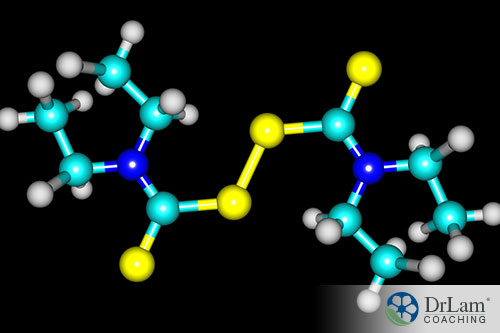 Once the Lyme bacteria establishes itself in your body, symptoms begin. In many ways, the symptoms of chronic Lyme disease show great similarities to those of AFS.
Once the Lyme bacteria establishes itself in your body, symptoms begin. In many ways, the symptoms of chronic Lyme disease show great similarities to those of AFS.
The assessment of chronic Lyme disease often gets dismissed by conventional medical practice. The thinking seems to be that a couple of rounds of antibiotics fixes the condition. This flies in the face of about 20% of Lyme disease sufferers who continue to experience symptoms after their course of antibiotics.
These persistent symptoms of chronic Lyme disease that show similarities to AFS include :
Many, if not most, of these symptoms plague those with AFS as well. The symptoms gradually get worse over time. In spite of this, lab tests show normal or only slightly abnormal results.
 Over time, these symptoms progress slowly but steadily with only a few periods of apparent good health. As months and even years pass, the repeated flare-ups and relapses of Lyme disease render the sufferer bedridden and unable to function.
Over time, these symptoms progress slowly but steadily with only a few periods of apparent good health. As months and even years pass, the repeated flare-ups and relapses of Lyme disease render the sufferer bedridden and unable to function.
This leads to great frustration at conventional medicine’s inability to successfully deal with the condition. One attempt after another fails to bring relief. Relapses continue as if the person is riding a roller coaster of minimal relief followed by a significant flare-up. Overall, the trend cascades downward. This results in significant emotional and physical stress leading to more rapid deterioration. Overall, the state of the body is decompensation.
The increasing stress caused by this type of progression also works to worsen AFS symptoms that are present. This sets in motion a circular effect of the two conditions, chronic Lyme disease and AFS, affecting each other and making the symptoms of each worse.
The main mechanism behind chronic Lyme disease is the bacteria’s ability to become a stealth infection by burrowing into deep cells in your body. As stated before, this allows the bacteria to survive antibiotics and remain in your body in a dormant state. The cell walls provide barriers against the antibiotics.
In addition, the bacteria that produce chronic Lyme disease also form a protective biofilm that prevents antibiotics from destroying them. Only if the antibiotics are especially strong will they pierce this biofilm. The combination of hiding deep in cells in your body and developing a biofilm makes you vulnerable to this kind of stealth bacteria.
At some time in your future, particularly when your immune system is weakened, possibly by AFS, the bacteria emerge from the protecting cells. At that point, they enter the interstitium to be transported to organs and organ systems around your body.
A body under stress from any source, as in AFS, provides the opportunity for migration from host cells into the interstitium. When stress such as this hits your body, your adrenal glands often become weakened due to chronic stress. This condition sets the stage for infections to emerge.
While these bacteria continue in the stealth state, they survive in a sort of dormant condition. The low levels of toxins they produce are not detected by typical lab tests, leading your healthcare professional to think the bacteria no longer exist.
 In this state, you may experience low-level inflammation responses from your immune system. But this mild resurfacing of symptoms typically is not bothersome.
In this state, you may experience low-level inflammation responses from your immune system. But this mild resurfacing of symptoms typically is not bothersome.
Your immune system is not triggered to release a large-scale response. This means no acute inflammation or massive leukocyte production occurs.
Although the above fools some healthcare professionals into thinking no pathogens exist, the bacteria continue to produce toxins. These toxins consist of by-products or metabolites of the bacteria’s metabolism. Symptoms caused by these toxins include those mentioned above that are similar to symptoms of AFS. The variation in number and severity of symptoms indicates the level of activity of the bacteria as they are in a semi-dormant state.
Your adrenal glands form the basic foundation for your body’s stress control system. Under chronic stress, this system becomes dysfunctional. When this occurs, your liver ceases to function well, becoming congested and slowed in its working. Congestion also occurs in the interstitium, the inter-cellular transport system in your body. This brings on problems.
This failure occurs especially when you are under emotional stress. Following major surgery or after a significant traumatic event, these types of problems become more likely.
This happens when your body becomes weakened by courses of antibiotics. This is when the bacteria that cause Lyme disease emerge from hiding and bring on recurrent infections.
And these recurring infections hit your body hard. Thus, your body tries to get rid of them through your immune system. The uncontrolled inflammation brought on by this attempt can damage your body significantly. Controlling this inflammation and your immune response depends on your adrenal glands. If they are weakened due to AFS, they no longer control these factors.
When your body is weakened by AFS, more of the same in terms of conventional treatment works against you. Adding more and stronger antibiotics harms your body in this weakened state.
In the first place, when you suffer from AFS, your immune system is already weak. Even with high numbers of Lyme-causing bacteria destroyed by antibiotics, your weak immune system won’t be able to cope with the remainder. This allows the remaining bacteria to go deep within your body and continue to survive.
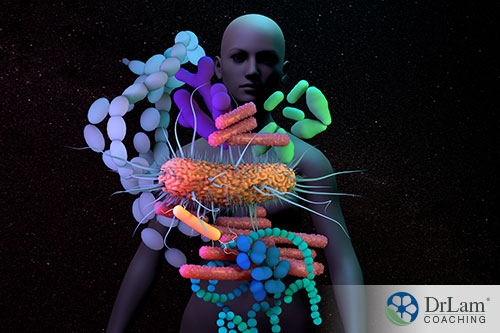 Another reason conventional Lyme treatment works against you if you have AFS is the indiscriminate killing of bacteria by antibiotics. Killing the good bacteria in your gut and microbiome leads to dysbiosis. Thus, your immune system then becomes hyperactive, resulting in increased and uncontrolled inflammation. This further weakens your body and allows the Lyme bacteria to thrive.
Another reason conventional Lyme treatment works against you if you have AFS is the indiscriminate killing of bacteria by antibiotics. Killing the good bacteria in your gut and microbiome leads to dysbiosis. Thus, your immune system then becomes hyperactive, resulting in increased and uncontrolled inflammation. This further weakens your body and allows the Lyme bacteria to thrive.
An additional reason conventional Lyme treatment serves to harm your body comes with the debris left when antibiotics kill cells. The remains of the killed cells clog your body functions and can set up a Herxheimer reaction in which these remains and the toxins they release cause damage to your kidneys and liver. This becomes more likely if your body already is weak due to AFS.
The recirculating of these toxins sets up a retoxification reaction that leads to adrenal crashes and crises. Ultimately, this reaction leads you to become bedridden and unable to function. It also increases the effect of AFS on your body.
Lyme disease exists on all continents except Antarctica. No one is immune. Second only to malaria in prevalence, it causes serious problems for all who contract it.
The bacteria that causes Lyme disease belongs to the class called spirochetes. Its shape allows it to literally burrow into deep cells of your body to escape destruction by antibiotics. These bacteria can invade your cells and live within them for a long time in a semi-dormant state.
Even after one or more courses of antibiotics, a certain number of the bacteria can survive and cause problems. In their semi-dormant state, the bacteria release metabolites which work as toxins in your body.
These toxins cause stress on your body, worsening any symptoms you experience from AFS. As your body weakens from this stress, the Lyme bacteria seize the opportunity to become more active and cause a resurgence of Lyme symptoms.
Chronic Lyme disease and AFS act in a circular manner, affecting each other and making the symptoms of each more serious.
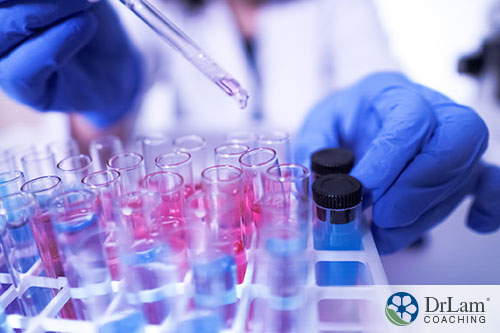 Accurate assessment of Lyme disease proves difficult. Many of the conventional lab tests do not accurately assess Lyme disease. Some of the typical lab tests prove valuable for general information. However, a careful medical history is possibly the best method for assessing Lyme disease.
Accurate assessment of Lyme disease proves difficult. Many of the conventional lab tests do not accurately assess Lyme disease. Some of the typical lab tests prove valuable for general information. However, a careful medical history is possibly the best method for assessing Lyme disease.
Alternative Lyme treatment should be considered. Some of these treatments include ozone therapy, hyperbaric oxygen therapy, chelation therapy, essential oils, acupuncture, diet, and supplements.
Care should be exercised when attempting any alternative Lyme treatment. One study found over 30 marketed alternative treatments. Unfortunately, little to no scientific evidence regarding effectiveness or safety exists.
You should consult your healthcare professional before starting any alternative Lyme treatment. Even natural options for remediating Lyme disease can be toxic or dangerous.
The inflammation circuit of the NEM stress response carries the greatest load when Lyme disease is present. With the presence of AFS symptoms, this additional load may push this circuit into dysfunction.
That leads to congestion and slow-down in your liver’s detoxification efforts, a slower rate of transport of substances through your interstitium, and potential problems in your gut and microbiome. This latter potential also carries with it a likelihood of increased inflammation as your immune system works overtime to handle the onslaught of foreign material in your body.
Overall, this means a breakdown in your body’s natural defenses against the effects of stress.
In addition, conventional methods of remediation of Lyme disease disrupts these defenses even more if you have AFS. Your body is already weakened from AFS, especially your immune system. This makes it more difficult for your immune system to rid your body of the left-over bacteria that cause Lyme disease after courses of antibiotics are over.
The remains of the bacteria killed by the antibiotics can cause a retoxification response as they are transported out of your body. Your depleted immune system cannot stop this if you have AFS.
© Copyright 2021 Michael Lam, M.D. All Rights Reserved.
Some alternative Lyme treatments appear to be effective for some people. However, there are some of these treatments that have little scientific backing and little to no information regarding their safety. It is imperative for you to seek consultation with your healthcare professional before trying any of them.
